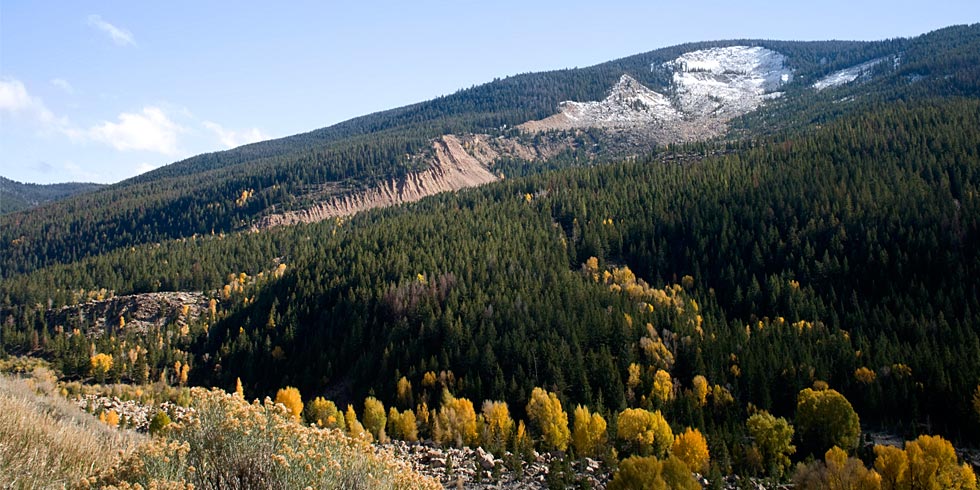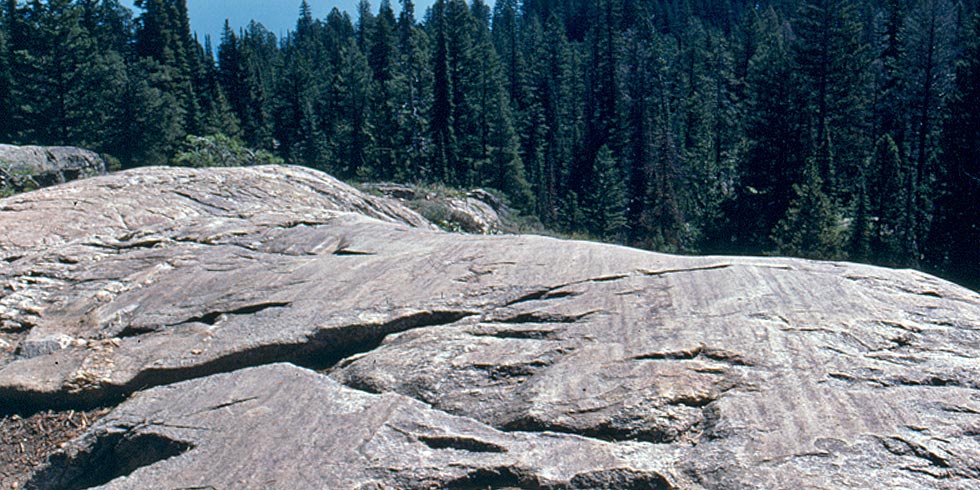Plate Tectonics
The Earth’s surface is fractured into tectonic plates. These plates are in constant motion—pushing together, pulling apart and sliding past one another. These forces build mountains and generate earthquakes
Volcanic Activity
Today, a plume of magma lies about five miles underneath Yellowstone. In the past, the magma has erupted violently depositing ash in Jackson Hole. The magma bulges and sinks moving the ground at our feet.
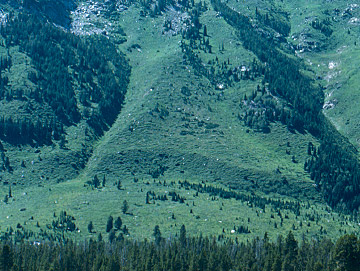 |
Earthquakes and Mountain Building
Tension builds on the Teton fault until the crust breaks generating an earthquake. Large earthquakes may break the ground by about ten feet with the mountains rising two feet and the valley sinking eight feet.
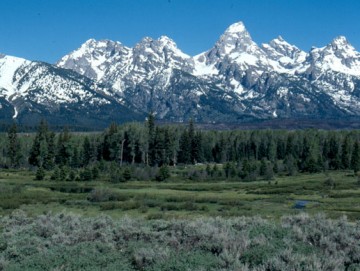 |
Sedimentation
Water, wind and gravity transport sediment from higher to lower elevation. Rivers, streams, lakes and ponds capture sediment. What was once a beaver pond may fill completely with sediment and become a meadow.
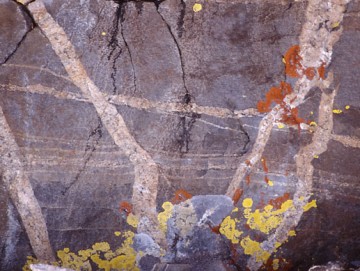 |
Weathering
Weathering breaks down rocks in many ways. Frost wedging occurs when water seeps into a crack in a rock, freezes, expands and forces the crack open. Lichens produce acid that eats away at the surface of a rock.
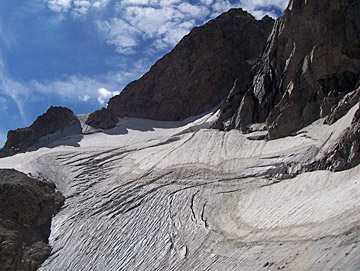 |
Glaciation
Glaciers scoured the landscape many times. Alpine glaciers carved U-shaped canyons and dug out depressions now filled with lakes. Ice sheets bulldozed the valley floor and meltwater deposited outwash plains.
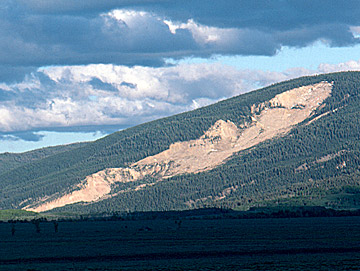 |
Landslides and Avalanches
Snow, dirt, rocks and trees slide down mountains as avalanches and landslides. These events leave behind a path of devastation. Stripping away vegetation further destabilizes the ground promoting more slides.
Geologic Hazards
Earthquakes, volcanoes and landslides are geologic hazards. Grand Teton and Yellowstone national parks are in one of the most dynamic regions on Earth. The ground may seem static, but it is constantly changing.
Discover Grand Teton is funded by the Grand Teton National Park Foundation in partnership with the National Park Service.
gtnpf.org
gtnpf.org
